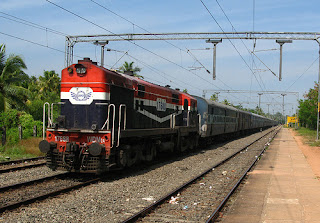Why Diesel Locomotive Engine Specifications Better For Train
A diesel train is a sort of railroad
train in which the prime mover is a diesel motor. A few sorts of diesel train
have been produced, contrasting for the most part in the methods by which
mechanical power is passed on to the driving wheels. Early interior combustion
trains and railcars utilized lamp oil, emd piston rings Or Bearings and gas as their fuel. Dr. Rudolf
Diesel protected his first pressure start engine in 1898, and consistent
upgrades in the structure of diesel motors decreased their physical size and
enhanced their capacity to-weight proportion to a point where one could be
mounted in a train. Inner ignition motors just work productively inside a
constrained torque go, and keeping in mind that low power gas motors can be
coupled to a mechanical transmission, the more dominant diesel motors required
the advancement of new types of transmission.
The "710" implies that every chamber
in this turbocharged, two-stroke, diesel V-12 has a dislodging of 710 cubic
inches (11.6 L). That is more than twofold the measure of the majority of the
greatest fuel V-8 vehicle motors - and we're just discussing one of the 12
chambers in this 3,200-hp motor. So why two-stroke? Despite the fact that this
motor is gigantic, in the event that it worked on the four-stroke diesel cycle,
as most littler diesel motors do, it would just make about a large portion of
the power. This is on the grounds that with the two-stroke cycle, there are
twice the same number of burning occasions (which produce the power) per
unrest. For reasons unknown, the diesel two-feed motor is extremely
significantly more rich and productive than the two-stroke gas motor.
The class WDM-2 is Indian Railways'
workhorse diesel-electric train. The main units were imported completely worked
from the American Locomotive Company (Alco) in 1962. Since 1964, it has been
produced in India by the Diesel Locomotive Works (DLW), Varanasi. The model
name represents expansive check (W), diesel (D), blended traffic (M) motor. The
WDM-2 is the most widely recognized diesel train of Indian Railways.
The WDM-2A is a variation of the
first WDM-2. These units have been retro-fitted with compressed air brakes,
notwithstanding the first vacuum brakes. The WDM-2B is a later train, worked
with air powered brakes as unique hardware. The WDM-2 locos have a greatest
speed of 120 km/h (75 mph),[1] limited to 100 km/h (62 mph) when run long hood
forward - the apparatus proportion is 65:18.

Comments
Post a Comment